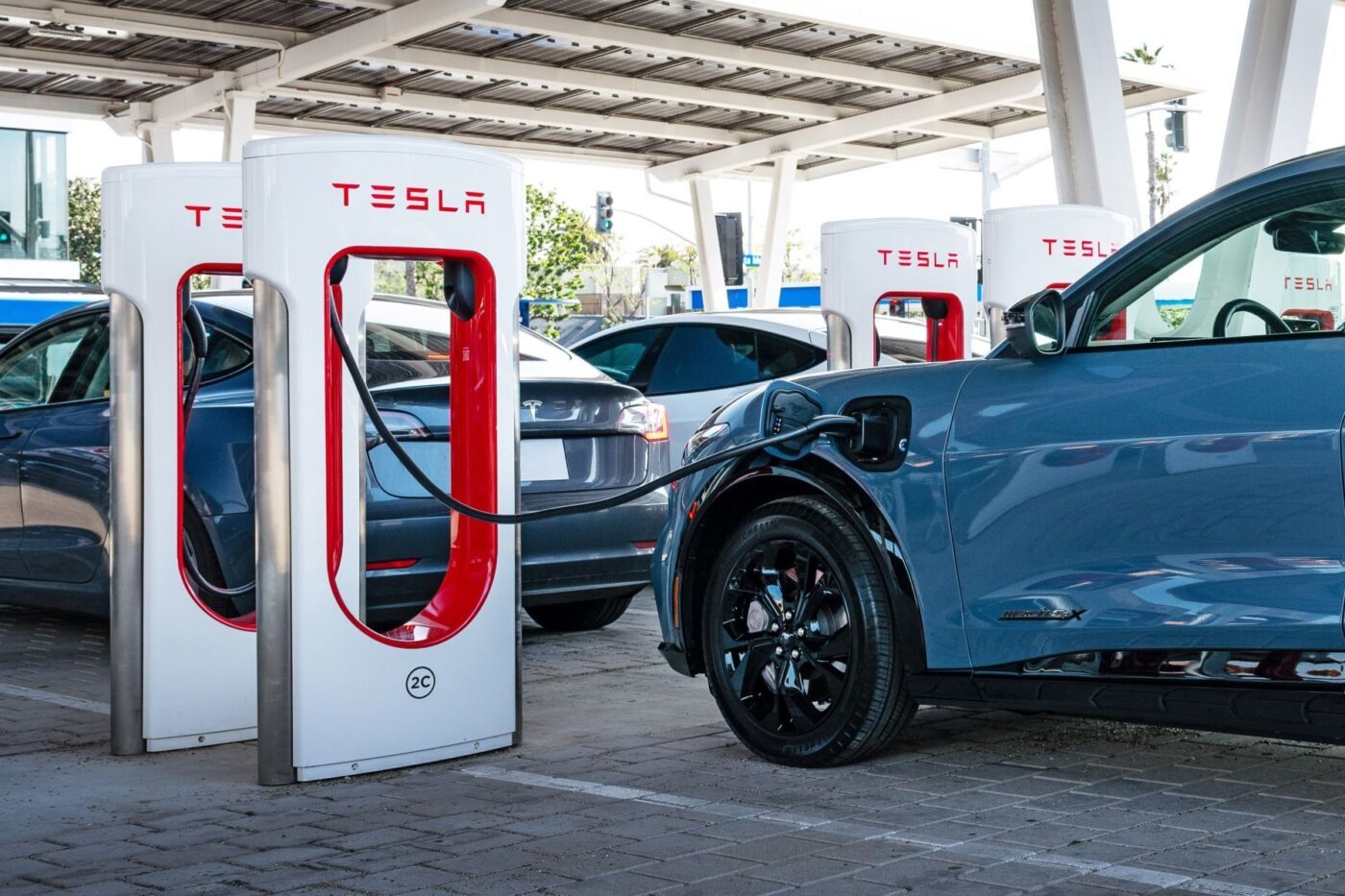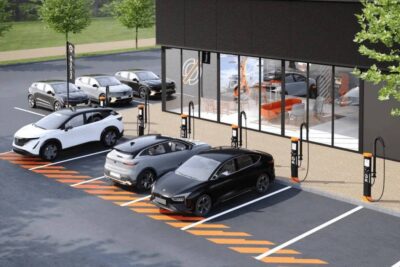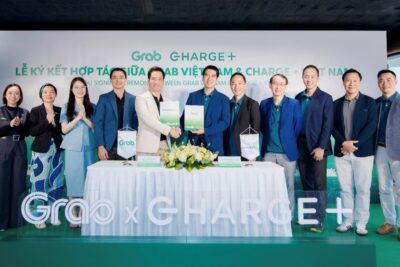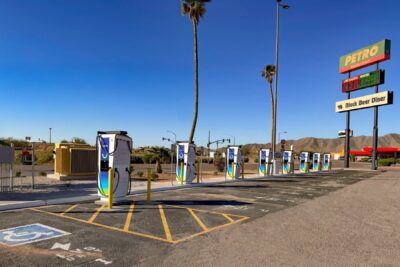First come, first serve – Tesla opens Superchargers to other carmakers
For Ford, this means that those owning the Mustang Mach-E, F-150 Lightning or the E-Transit can now use more than 15,000 of Tesla’s fast-charging stations in the USA and Canada via an adapter. This also more than doubles the company’s BlueOval charging network.
Ford was the first car manufacturer to announce the NACS switchover at the time, so the company’s clients are now first in line. This coming spring, electric cars from General Motors, Rivian, Volvo, and Polestar will join the cue, according to the order in which they had agreed to separate deals with Tesla.
The EV maker clarified online that the opening affects only around 15,000 Superchargers in North America; that is over half of Tesla’s 27,000 charge points. About 500 Superchargers are already equipped with CCS adapters and are therefore accessible for electric cars of other brands.
However, the OEMs switching to NACS will receive their adapter for drivers to carry in their vehicles. This adapter connects Tesla’s NACS charging station to the vehicle’s CCS1 port on the infrastructure side and thus allows access to the 15,000 Superchargers and not just the 500 charging points with CCS adaptation.
Ford NACS adapter for free until June, then for $230
Apart from Ford, only Rivian, GM, Volvo and Polestar are listed on the website as being supported by adapters from the spring.
Tesla has yet to firmly schedule the other manufacturers, including Mercedes-Benz and BMW. Their cars will also use an adapter before the new models have a NACS charging port from 2025, thus natively supporting the Superchargers.
Ford customers who order an electric Ford by 30 June 2024 will receive the adapter free of charge from Ford. Anyone who requests a model with a CCS port after this date and wants to use the Superchargers will be charged 230 dollars for the adapter.
However, one hurdle remains at the Superchargers, adapter or not: the Mustang Mach-E and F-150 Lightning have their charging port at the lefthand side between the front wheel and the driver’s door, so they have to park differently than intended for the charging station to be able to plug in. Only the V4 Superchargers have longer charging cables, which makes it easier for other brands to use them.
With the Ford deal starting, the tariffs have become clear: Ford customers pay around 30 per cent more per kilowatt hour than Tesla drivers. Only when they take out a ‘Supercharging Membership’ for $13 per month – similar to the third-party brands in Europe – will the kWh prices drop to the Tesla level.
“Starting today, Ford EV customers will have access to more than 15,000 Tesla Superchargers across the US and Canada, more than doubling fast charging options on the BlueOval Charge Network. This move will improve the public charging experience by giving our customers even more choice and is a vital part of our growth as an EV brand,” said Ford CEO Jim Farley. “I would like to thank Elon and the Tesla team for their close collaboration and Tesla’s leadership to help change the lives of so many EV customers through improved access to charging.”
ford.com, tesla.com (on the opening), electrek.co, twitter.com, tesla.com (third-party tariffs)





0 Comments